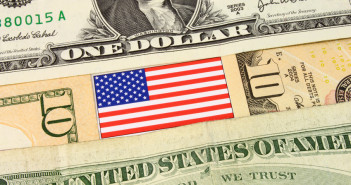- The Federal Reserve is expected to leave the rate unchanged in its May decision.
- The statement will be scrutinized to see the cementing of a June hike.
- The reaction to the recent inflation and growth figures may be telling.Â
The Federal Open Market Committee will make its rate decision on Wednesday, 18:00 GMT. This meeting does not consist of new forecasts nor a press conference. The Fed is not expected to raise rates at this juncture, but they still release the usual statement which will be closely watched by markets.
Reasons to be cheerful
According to bond markets, there are high chances of a rate hike in June after recent data beat and Fed officials have voiced optimism about the economy and the prospects of reaching the 2% inflation target. Indeed, the figures for March showed that Core CPI jumped from 1.8% to 2.1% YoY. The Fed focuses on the Core PCE. The fresh figure for March also moved higher: from 1.6% to 1.9%, within touching distance of the goal.
Other data points since the March meeting were also upbeat. Wage growth stabilized at 2.7% YoY, and Q1 GDP grew by 2.3% annualized. This reflects a slowdown in comparison to Q4 (2.9%) but the initial quarter of the year came out lower in previous years, and the data came out better than early expectations.
Recent comments by Fed members before the pre-decision blackout period were also upbeat. John Williams, the President of the San Francisco Fed and the nominee to the influential New York Fed was optimistic about reaching the inflation target and was very confident about the economy. Lael Brainard that is usually a dove, also saw the glass half full. She is a permanent voter.
All in all, the message will likely be upbeat and more importantly cement a rate hike in June.
Also, it may increase the odds of four rate hikes in 2018, with the next ones coming out in September and December. The current dot-plot from March kept the outlook at three rate hikes in total, but for reaching four rate rises in that document, only one vote was missing. All in all, the Fed was already divided between three and four increases, and recent data can push them to the hawkish side.
What can spoil the party?
In the previous March meeting, Powell did share concerns about international trade. He quoted business contacts’ worries about tariffs. Since then, tensions have eased as the US and China are talking but the spat is not over and also Williams recently raised concerns.
Uncertainty about future trade relations is an issue that the Fed inevitably discusses. Any mention of tariffs or trade in the statement will convey a message that the Fed is worried. And if the Fed is worried, markets may worry as well.
Another source of worry would be some adverse commentary about the slow rise in wages. This is quite unlikely as wage growth is gradually moving higher. If Powell and co. do surprise with some frustration about salaries, this could serve as a hint that the Non-Farm Payrolls report on Friday is about to disappoint. The jobs report may already be available to the FOMC members.
Potential Dollar reaction
A no hike scenario is fully priced in, and also a June hike is almost entirely on the cards. An optimistic message can, therefore, push the USD a bit further, but is unlikely to result in an overwhelming rally. The greenback may experience different reactions against different currencies:
EUR/USD: The euro remains under pressure amid weak euro-zone economic data and may continue struggling if the Fed indeed confirms the confidence. However, it already fell quite a bit and may rebound if the message leans more towards a “wait and see†approach.
GBP/USD: The Pound also suffered a series of setbacks in economic figures, as well as Brexit concerns, and also fell. Nevertheless, it had a chance to recover, and an upbeat message from the FOMC could push it further to the downside.
USD/JPY: Contrary to the Fed, the BOJ recently confirmed its loose monetary policy and even removed the timeframe for achieving the 2% inflation goal. And like the GBP/USD, the pair has already consolidated its recent moves, and the Fed may push it higher.
Commodity currencies: The Canadian, Australian, and New Zealand Dollars are more sensitive to trade. If the Fed expresses concern, these currencies could fall even if the Dollar does not rally against the other currencies.
Conclusion
The Fed is expected to leave the interest rates unchanged at its May meeting while cementing a rate hike in the more critical June one. Responses to recent data and especially the bump up in inflation are central. Any concern about trade relations may be a dampener.
More: Fed to hold this, but with fingers on the trigger? – ING



